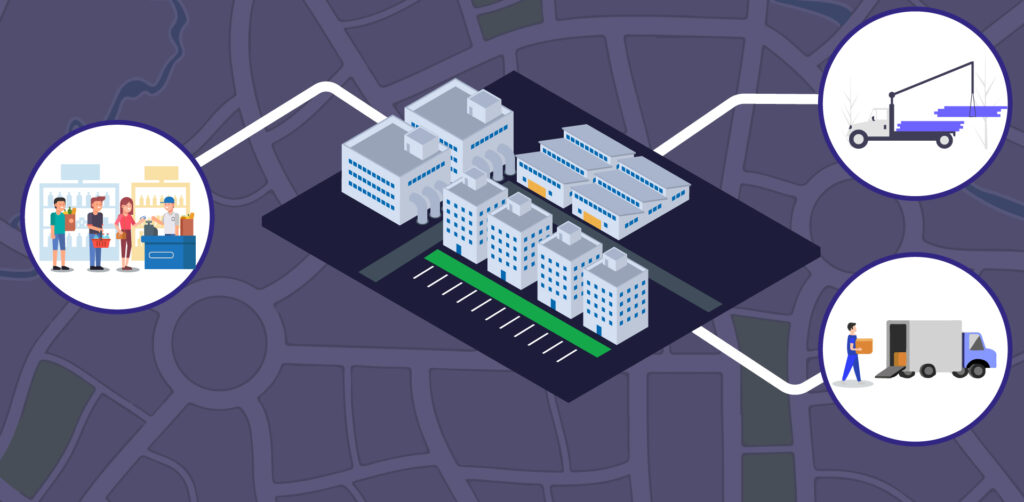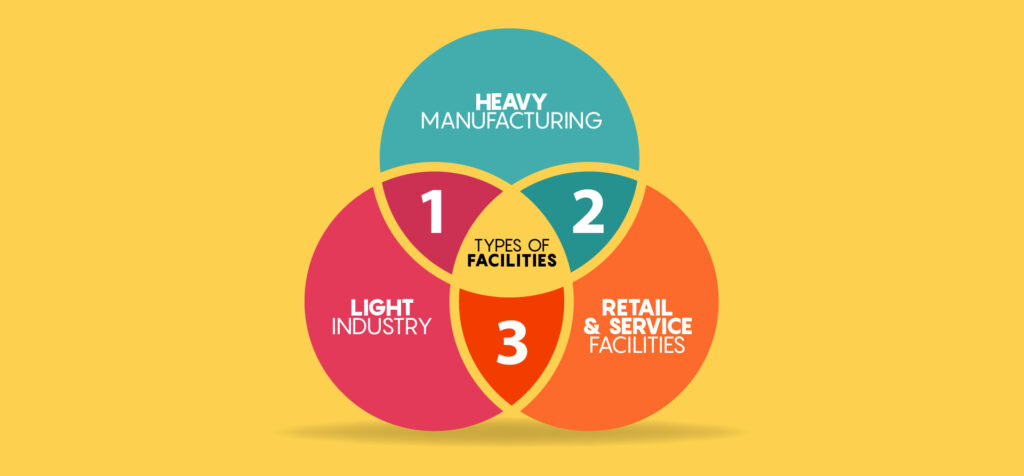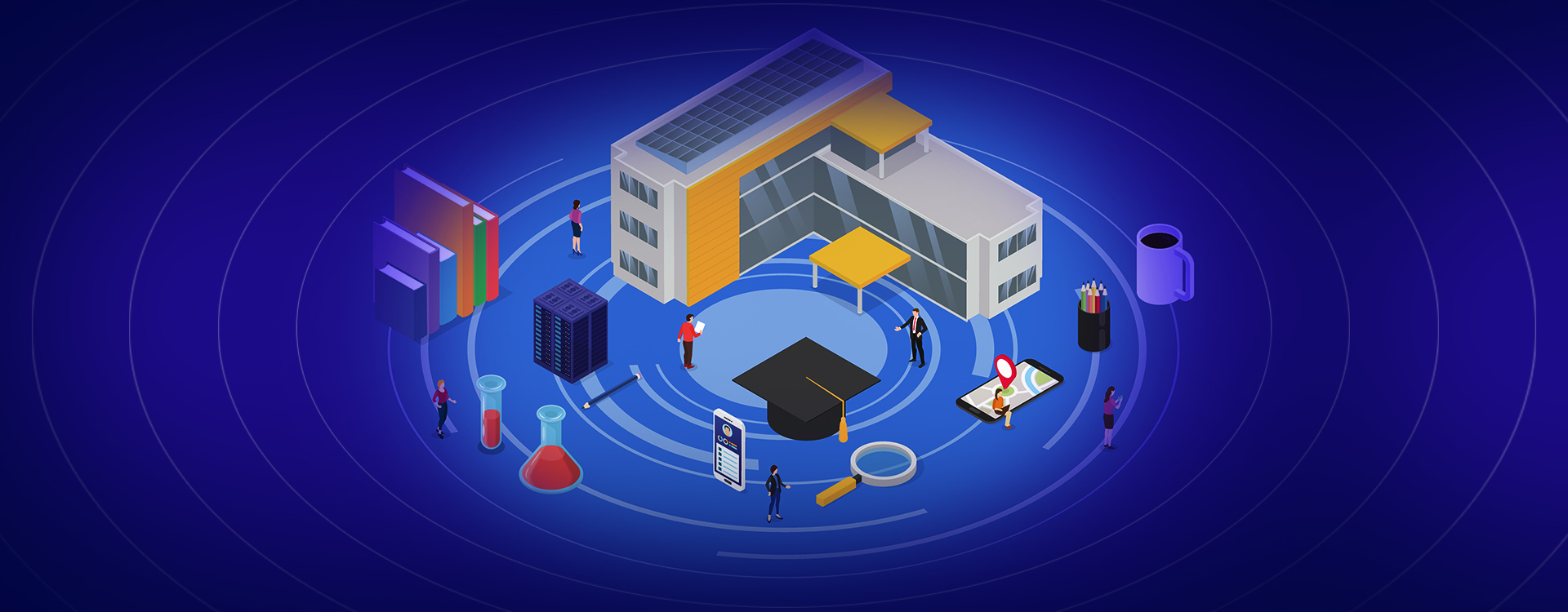When you go to the beach on a crowded day, you try to find the best spot to sit in. You look for an area that is not too crowded, but not too isolated. It should be just the right distance from the snack stalls as well as the ocean. The same concept applies in business when you are looking for the right place to set up shop – finding the facility location in the market that will give your business the best chance of success.
What Is Facility Location Planning And Why Is It Needed?
As the name might suggest, it is the process of finding and establishing the ideal geographical location for a facility. A facility in this case is generally a structure dedicated to a certain aspect of your business, be it sales or manufacturing or storage. This also includes facilities that provide a certain set of goods and/or services. The process is focused on placing these establishments in areas that would drive up the chances of commercial success and give that specific facility a competitive edge.
Apart from the fact that it provides a significant economic advantage, a business could find that there is a need for planning for several other reasons. For one, it could be because it already has a facility and is looking to expand or even relocate to an area that has a more active customer base. Planning is mainly needed for reducing the cost of transport and production. It should be close enough to the source of raw materials as well as the market to which the finished products will be sent.
Of course, this may not always be the case and the reasons could vary depending on the industry and other socio-economic factors. For examples, if the market was down in a particular area due to lack of customers, then the business would have to relocate to a place that was more responsive to its efforts.

‘‘
The growth of a business directly depends on its location. You can only have a successful business where people have a need that has to be met and somewhere accessible.
A Step-By-Step Guide On How To Identify The Facility Location
Step 1: Come up with a location analysis
Before setting out to find your future business locality, you need to assess the different factors that could affect the location’s decision. This gives you an initial idea about the limitations and boundaries within which you can do your search and it helps narrow down the entire process. There are two types of factors that you need to consider:
Controllable factors
- Proximity to the market.
- Supply of raw materials.
- Access to transportation.
- The availability of supporting infrastructure.
- Ability to pay labour wages and the availability of said labour in the area.
- Availability of finances to run the facility.
- The type of industry you are active in.
Uncontrollable factors
- Government policies.
- Unpredictable or unfavourable climate conditions.
- The lack of supporting industries or infrastructure in the area.
- The community’s perception of the business.
- Any competitors that exist or may come to exist in that location anywhere in the near future.
Based on the nature of the industry the business is in, the company needs to highlight and assign a weight to each one of those factors. The ranking is usually on a scale of ‘0’ to ‘1’, which indicates least important and most important respectively. This helps identify which are the factors that will most likely affect the search for your location and what you should consider before settling on any one location.
Step 2: Find the ‘centre of gravity’
Simply put, it is finding the right location relative to other locations. A centre of gravity in this context means to reduce the cost of transportation by determining the ideal location for the facility.
The cost of transportation depends mainly on the distance the materials and products need to be moved, the weight of the items and the time it takes to move it. By mapping out the location of the different suppliers in the area, the distance to the market and the distance to the facility from the suppliers, the centre-of-gravity technique allows you to find the most centralised location that would bring down overall transportation costs.
Step 3: Establish a backup plan
It is not a guarantee that even after all your research and analysis that your first choice will be finalised. As mentioned before there are unexpected and uncontrollable factors that may affect the end-decision and cause last-minute ripples. Having said that, you should come up with a couple of alternative locations, based on the same two steps mentioned above.
Keeping the criteria uniform ensures that the backup locations will more or less be ideal for the new facility once finalised.
Step 4: Time to make a decision
Once you have all the information at your disposal, make the choice and get to work. Remember, the location you choose should complement the type of industry the business is involved in.
Step 5: Visualise and execute
This step revolves around the actual manifestation of the idea. Turn the plans for the facility into a visual three-dimensional model or display based on the location and size of the area the facility is to be set up in. This process helps you evaluate the effectiveness of the facility and where improvements can be made before the business is operational.

Types Of Facilities To Consider When Planning
There are generally three categories into which facilities can be categorised. Consider these divisions and see which area your new business establishment falls into, as each section comes with its own set of challenges and advantages.
Heavy manufacturing facilities: These are the large commercial factories that you see on TV. They occupy an enormous amount of space and are very heavy on the cost in terms of maintenance and energy expenditure. You also have to hire a large number of people to help operate these behemoths. If your business falls into these categories you should prepare a significant budget to run the business for a minimum of 18 months where you might not see a profit.
Light industry facility: On the other end of the manufacturing spectrum, we have these light industries that operate on a much smaller scale. They specialise in products that are not so capital intensive, for example, matchboxes, spectacles, small electronic gadgets, kitchen utensils and so on.
Due to their smaller size, they have smaller maintenance and operating costs as well. These types of facilities are more customer-oriented as opposed to the large-scale mass production of the heavy industrial facilities. It would make more sense to have them located closer to your customer base and local retail stores where the products can be purchased.
Retail and service facilities: The last broad category to consider is retail or service facilities. These are essentially all your grocery stores, supermarkets, bakeries and restaurants. Compared to the other two categories, this type of facility is the smallest and least costly, relatively speaking. Being that its main function is to service the customer directly, it should be located right where the customers are.
Urban and suburban areas are great locations for these types of establishments. It also means that you need to select an area based on the amount of competition you may face there.
‘‘
It stands to reason that the type of facility you choose depends entirely on the type of business, and it is possible to have a hybrid of these facilities depending on your needs.
To sum up
Yes, this entire process of pre-planning the location of your new establishment is one that is centred on cost-saving and gaining an edge in the market. It does, however, come with its share of problems. Despite all the planning, if something were to unexpectedly go awry, for example, the COVID pandemic-lockdown, then that location would be compromised and all the planning and time invested in that one location goes to waste.
Another thing to watch out for – you cannot move locations often as this will be very cost heavy on the company. So, no matter what the location or business, you should anticipate as best you can for all the benefits and downfalls before proceeding with the location for the facility. At the end of the day, it all comes down to two things – the data from the planning and the nature of the business/facility. The point of these facilities is to be so ideally placed that they help develop the sales network of the business.
Read our article on sales development to learn more about how you can turn your business facility into a highly effective point of operations and sales.




